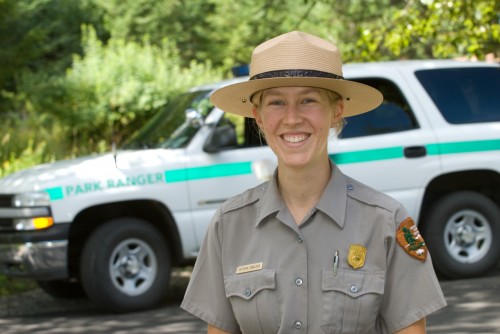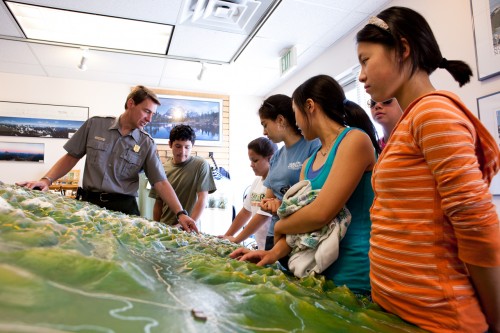Teaching Climate Change: Tips from Park Rangers

By Elisabeth Keating, guest blogger
How can you help kids retain their learning when you’re teaching something as complex as climate change?
These tips from park rangers Will George of Lewis & Clark National Park and Autumn Carlsen of North Cascades National Park can help convey climate change to children in a compelling and powerful way.
- Focus on telling stories, not bombarding kids with boring abstract statistics.
- Involve the kids with interactive exercises like movement, song, and quizzes. You might ask kindergarteners to paint recycling bins, for example.
- Use puppets and other props to teach abstract topics.
- Keep it local. Talk about how climate change will impact the world kids know. For example, kids in the Pacific Northwest understand salmon and watershed topics. Kids who live in mountains might relate better to stories about pika and bear habitat shrinking. City kids might relate to hotter summers and needing to use more air conditioning.
- Have fun and show how we all benefit from taking care of the planet. Taking care of the planet doesn’t have to be depressing or boring. Think, “Less stuff equals more fun!”
- Set measurable, clear goals and objects for what students will learn.
- Check in frequently with your audience to assess how you’re doing. For example, as we ate lunch, the rangers asked the students to close their eyes and answer a question with a thumbs up, thumbs down, or middle thumb sign: “Think about what we did this morning. How helpful was the map we looked at the morning in learning about the North Cascades?” There’s a universal display of enthusiastic upturned thumbs. “That’s a great, very quick assessment technique to use with little kids when you’re teaching” they explain. “Be sure to check in regularly and make sure they’re interested and staying with you.”
One more tip from a recent New York Times article, Forget What You Know About Good Study Habits, reveals new cognitive research that seems to prove that the brain retains knowledge best when the study environment is varied.
“The brain makes subtle associations between what it is studying and the background sensations it has at the time,” the authors say, “regardless of whether those perceptions are conscious.” Forcing the brain to make multiple associations with the same material may, in effect, give that information more neural scaffolding.
“What we think is happening here is that, when the outside context is varied, the information is enriched, and this slows down forgetting,” said Dr. Bjork, the senior author of the two-room experiment.

If so, the Cascades Climate Challenge students should have no problem retaining the knowledge they’ve gained in the North Cascades. In the 2 days I spent with the students, our classrooms varied from the map diorama in the North Cascades Visitors Center to an auditorium where we watched an excerpt from a documentary, to an outside deck with a view of the Pickett Range, to a rocky riverbank to the inside of a tree to a cedar platform overlooking a 1400-year old ceremonial cave, to a campfire, to a humming Skagit River powerhouse. And that was one of the tamer weekends!
Elisabeth will be posting more stories from her time spent with the Cascades Climate Challenge over the coming days — stay tuned, and a big thanks to her for visiting us and writing about it in turn!
Top photo of Autumn by Rick Allen; bottom photo of Chip Jenkins and the Climate Challenge students by Benj Drummond.


Elizabeth– Thought you might like to know I designed and published a beautiful educational poster on “Climate impacts on a NW Forest” that focuses on Olympic Peninsula Forests.
See @ http://www.goodnaturepublishing.com
USFS ordered 5000- you should, too;)
Best fishes,
Timothy Colman
800 631 3086
Hi Timothy– That is really cool (no pun intended, ) — I will order a copy!
) — I will order a copy!
thanks for letting me know!
–Lisa